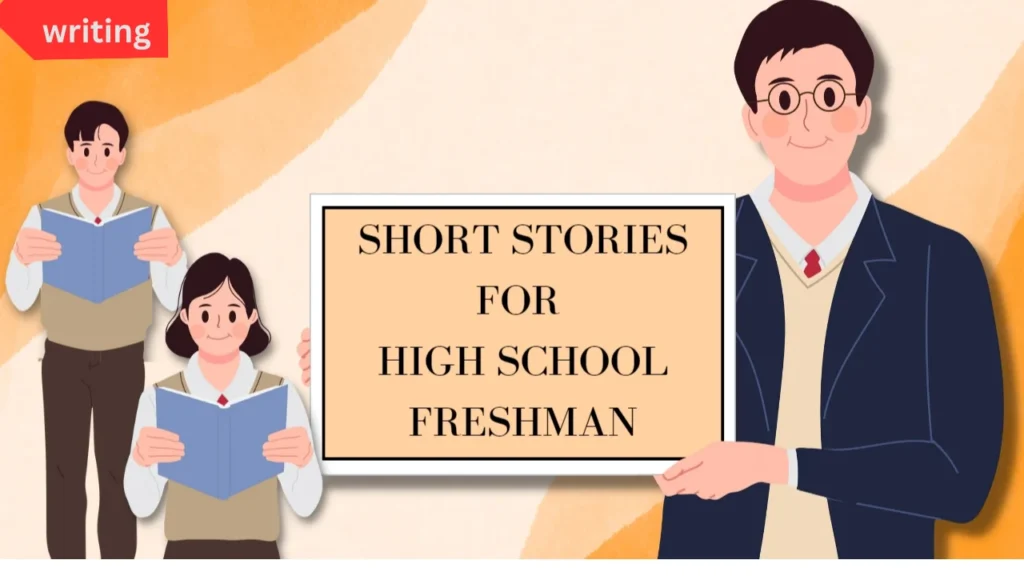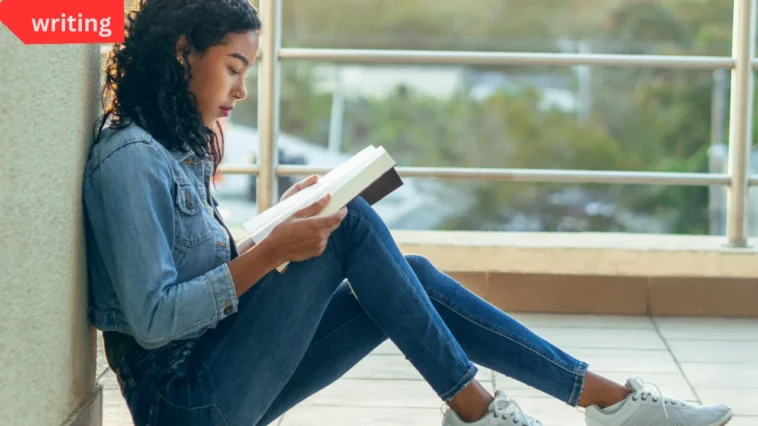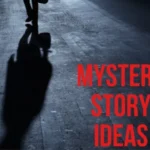High school is a time of discovery, growth, and challenge—a chapter in life filled with moments that shape who we are. “Short Stories for High School” is a curated collection designed to entertain, educate, and inspire students as they navigate these transformative years. Through relatable characters, diverse perspectives, and compelling narratives, these stories delve into themes that resonate deeply with young readers.

Purpose
The primary goal of this collection is to provide high school students with engaging fiction that reflects their experiences, aspirations, and struggles. Each story serves as both a mirror and a window: a mirror to see themselves and a window to understand others. Teachers and educators can also use these stories as valuable classroom resources to spark discussions and encourage critical thinking.
Themes and Categories
1. Coming of Age
Key Focus: Growth, identity, and self-discovery.
- Example Story: A teenager auditions for a prestigious music program but falters on stage. Through reflection and practice, they discover resilience and a renewed sense of purpose.
- Another Example: A high schooler wrestles with balancing cultural expectations and their passion for art, ultimately finding a way to honor both.
2. Friendship and Relationships
Key Focus: Bonds, conflicts, and forgiveness.
- Example Story: Two best friends have a falling out over a misunderstanding, only to reconnect years later when life brings them back together.
- Another Example: A student confronts the challenge of standing up to a toxic friendship, learning the value of self-respect.
3. Family Dynamics
Key Focus: Love, tension, and shared history.
- Example Story: Siblings with a long-standing rivalry must join forces during a family emergency, discovering strength in their bond.
- Another Example: A high school student stumbles upon a family secret that reshapes their understanding of their identity.
4. Social Issues
Key Focus: Empathy, activism, and change.
- Example Story: A student organizes a school-wide campaign to save the local library, inspiring their peers to stand up for what they believe in.
- Another Example: A teen becomes the target of cyberbullying but finds the courage to speak out and help others facing similar struggles.
5. Mystery and Suspense
Key Focus: Curiosity, problem-solving, and the unknown.
- Example Story: A group of students discovers an old journal in their school’s library, unraveling a decades-old mystery.
- Another Example: A new student in town harbors a secret that sparks intrigue and suspicion among their classmates.
6. Science Fiction and Fantasy
Key Focus: Creativity, imagination, and speculative worlds.
- Example Story: After a mysterious solar storm, a teenager gains the ability to read minds and must navigate the challenges of this newfound power.
- Another Example: In a dystopian future where books are outlawed, one student discovers an underground network preserving the written word.
7. Inspirational and Uplifting
Key Focus: Hope, perseverance, and triumph.
- Example Story: A shy student overcomes stage fright to deliver a breathtaking performance in the school play.
- Another Example: Acts of kindness by one high schooler spark a chain reaction that transforms their community.
8. Historical and Cultural Perspectives
Key Focus: History, diversity, and cultural appreciation.
- Example Story: A young girl witnesses a pivotal moment in history and reflects on its impact.
- Another Example: A boy’s school project on his heritage leads to a deeper appreciation for his family’s cultural traditions.
Related Article : 30 best Christmas Stories for Middle & High School
Story Elements
Each story in this collection is crafted with relatable protagonists, engaging plots, and thought-provoking themes. Here are the core elements:
- Protagonists: Characters typically aged 14–18, reflecting the audience’s own perspectives and challenges.
- Plot Structure: Clear beginnings, climaxes, and resolutions that focus on pivotal moments of change or realization.
- Language: Accessible yet impactful, with occasional use of modern slang to enhance relatability.
- Length: Stories range from 1,500 to 3,000 words, making them concise yet meaningful reads.
Additional Features
To enrich the reading experience, the collection includes:
- Discussion Questions:
- Encourage reflection and classroom dialogue.
- Example: “What does the protagonist learn about themselves by the end of the story?”
- Writing Prompts:
- Inspire creative expression based on the stories.
- Example: “Write about a moment when you had to overcome a fear and how it changed you.”
- Illustrations (Optional):
- Minimalistic artwork to visually complement each story’s theme.
- Glossary:
- Defines complex terms and cultural references for deeper understanding.
Sample Titles
- The Secret on Elm Street (Mystery)
- When the Music Stopped (Inspirational)
- Under the Mango Tree (Cultural Perspective)
- The Protest (Social Issues)
- Digital Shadows (Science Fiction)
- The Last Summer (Coming of Age)
- The Forgotten Journal (Historical)
50 short stories suitable for high school students.
Classic Short Stories
- “The Lottery” by Shirley Jackson
- “A Sound of Thunder” by Ray Bradbury
- “The Most Dangerous Game” by Richard Connell
- “The Tell-Tale Heart” by Edgar Allan Poe
- “The Necklace” by Guy de Maupassant
- “The Gift of the Magi” by O. Henry
- “The Cask of Amontillado” by Edgar Allan Poe
- “Harrison Bergeron” by Kurt Vonnegut
- “To Build a Fire” by Jack London
- “An Occurrence at Owl Creek Bridge” by Ambrose Bierce
Stories with Strong Social Themes
- “Everyday Use” by Alice Walker
- “Thank You, Ma’am” by Langston Hughes
- “The Lesson” by Toni Cade Bambara
- “Girl” by Jamaica Kincaid
- “The Paper Menagerie” by Ken Liu
- “A Very Old Man with Enormous Wings” by Gabriel García Márquez
- “The Veldt” by Ray Bradbury
- “Brownies” by ZZ Packer
- “Recitatif” by Toni Morrison
- “In a Grove” by Ryūnosuke Akutagawa
Thought-Provoking Stories
- “The Story of an Hour” by Kate Chopin
- “The Yellow Wallpaper” by Charlotte Perkins Gilman
- “The Ones Who Walk Away from Omelas” by Ursula K. Le Guin
- “Cathedral” by Raymond Carver
- “A Clean, Well-Lighted Place” by Ernest Hemingway
- “The Secret Life of Walter Mitty” by James Thurber
- “Flowers for Algernon” by Daniel Keyes (short story version)
- “Barn Burning” by William Faulkner
- “Araby” by James Joyce
- “The Metamorphosis” (excerpt) by Franz Kafka
Stories for Discussions on Identity
- “Two Kinds” by Amy Tan
- “The White Umbrella” by Gish Jen
- “Interpreter of Maladies” by Jhumpa Lahiri
- “Fiesta, 1980” by Junot Díaz
- “Seventh Grade” by Gary Soto
- “Raymond’s Run” by Toni Cade Bambara
- “No Name Woman” by Maxine Hong Kingston (from The Woman Warrior)
- “Eleven” by Sandra Cisneros
- “The Scarlet Ibis” by James Hurst
- “How to Date a Brown Girl (Black Girl, White Girl, or Halfie)” by Junot Díaz
Science Fiction, Fantasy, and Dystopia
- “There Will Come Soft Rains” by Ray Bradbury
- “All Summer in a Day” by Ray Bradbury
- “The Machine Stops” by E.M. Forster
- “Exhalation” by Ted Chiang
- “The Star” by Arthur C. Clarke
- “I Have No Mouth, and I Must Scream” by Harlan Ellison
- “The Nine Billion Names of God” by Arthur C. Clarke
- “Bloodchild” by Octavia E. Butler
- “The Last Question” by Isaac Asimov
- “The Fly” by Katherine Mansfield
These stories are diverse in terms of authorship, themes, and literary style, ensuring engagement for students with varying interests. Let me know if you’d like summaries or teaching ideas for any specific story!
Frequently Asked Questions (FAQs)
Q: Who is the intended audience for this collection? A: The stories are designed for high school students (ages 14–18) and educators seeking engaging and relatable fiction for classroom use or personal reading.
Q: How many stories are included in the collection? A: The collection features 10–15 short stories spanning various genres and themes.
Q: Are the stories appropriate for classroom discussions? A: Yes, each story is crafted to be thought-provoking yet appropriate for high school readers. Discussion questions are included to encourage meaningful conversations.
Q: Can students submit their own stories? A: While this edition is curated, future editions may consider student submissions. Stay tuned for announcements!
Q: Are the stories based on real-life events? A: Some stories are inspired by real-life events or experiences, while others are purely fictional. Each aims to reflect universal themes relatable to high school students.
Q: How can teachers use this collection in their classrooms? A: Teachers can use the stories to complement lessons on literature, themes, and writing styles. Discussion questions and writing prompts are provided to deepen engagement.
Q: Is there an eBook version available? A: Yes, an eBook version will be made available for ease of access and reading on digital devices.
Conclusion
“Short Stories for High School” is more than a collection of fiction; it’s a journey through the challenges and triumphs of adolescence. By reading these stories, students will find inspiration, foster empathy, and gain new perspectives on their world. Whether in the classroom or at home, this collection offers a meaningful escape into the power of storytelling.
Acknowledgments
We extend heartfelt thanks to the educators, students, and writers who contributed to this collection. Your stories and support make this project a reality.


